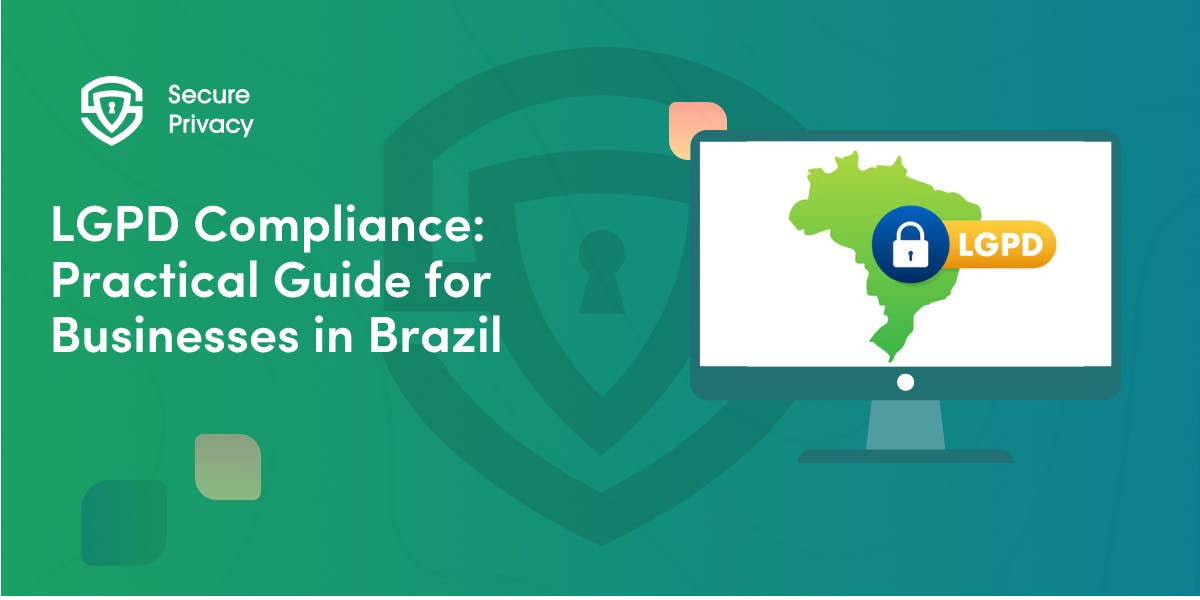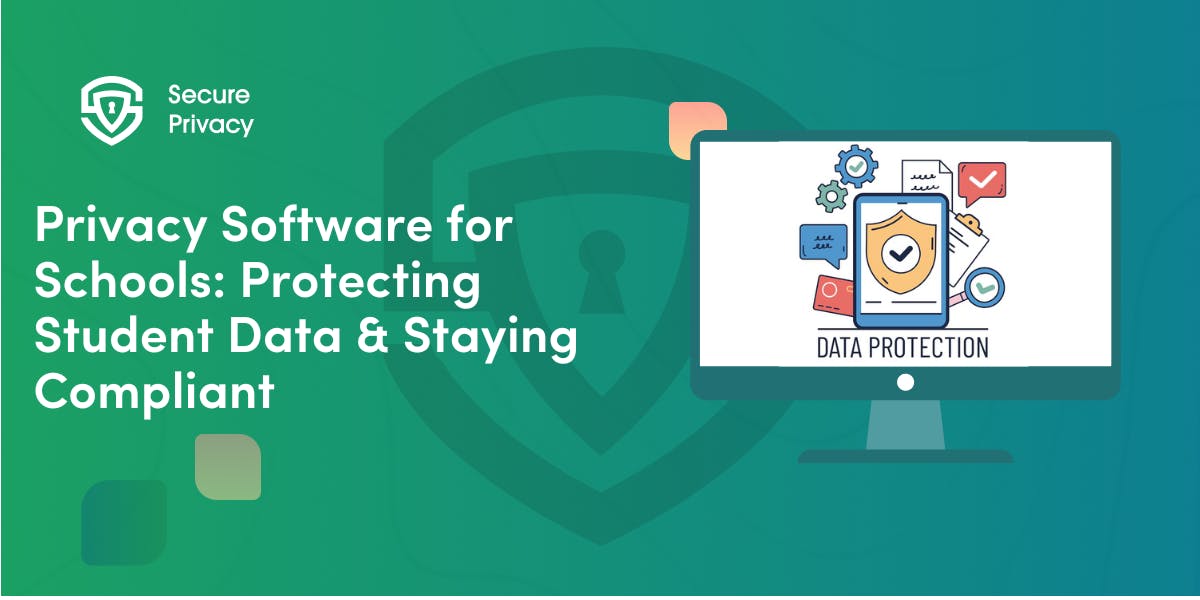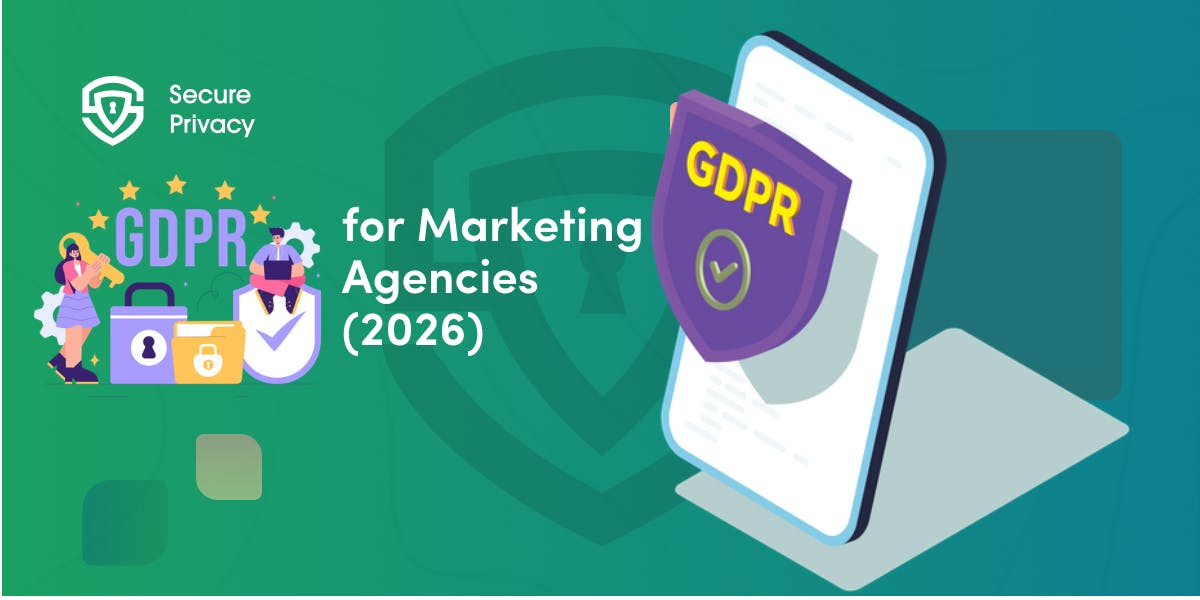How to Conduct a Privacy Impact Assessment (PIA): A Step-by-Step Guide for Public Sector Agencies
Step-by-step guide to privacy impact assessments for agencies represents more than legal compliance —it's the foundation for building public trust in government data handling practices. Agencies that implement comprehensive, systematic PIA processes demonstrate accountability while protecting citizens' privacy rights through proven step-by-step guide to privacy impact assessments for agencies methodologies.
The investment in proper PIA implementation pays dividends through reduced privacy risks, improved public confidence, and proactive identification of privacy issues before they become costly problems. Modern automated tools make comprehensive privacy assessment achievable even for resource-constrained agencies using standardized step-by-step guide to privacy impact assessments for agencies frameworks.
Your agency's next data project could expose you to massive privacy violations, regulatory penalties, and public trust disasters — unless you implement a proper Privacy Impact Assessment process. Most government agencies are conducting PIAs incorrectly, missing critical privacy risks that could have been identified and mitigated through systematic evaluation.
This step-by-step guide to privacy impact assessments for agencies provides the comprehensive framework you need to conduct legally compliant, thorough privacy risk evaluations. You'll discover exactly how to implement a repeatable PIA process that satisfies regulatory requirements while protecting your agency from costly privacy failures.
What is a Privacy Impact Assessment?
A Privacy Impact Assessment is a systematic evaluation process that identifies, analyzes, and mitigates privacy risks associated with government data processing activities. PIAs serve as both legal compliance tools and practical risk management instruments that protect agencies from privacy violations before they occur.
Step-by-step guide to privacy impact assessments for agencies requirements stem from multiple legal frameworks. The Privacy Act of 1974 established foundational privacy protections for federal agencies, while the E-Government Act of 2002 mandated PIAs for new information technology systems that collect personal information.
Modern PIA requirements extend beyond federal mandates. State and local agencies face additional obligations under various privacy laws, while international frameworks like GDPR Article 35 establish comprehensive Data Protection Impact Assessment (DPIA) requirements for organizations processing European residents' data.
The fundamental purpose of PIAs is proactive risk identification. Rather than discovering privacy problems after system deployment, agencies can identify and address potential issues during the planning and development phases when solutions are more cost-effective and less disruptive.
Who Needs to Conduct Privacy Impact Assessments?
Federal Agency Requirements
Federal agencies must conduct PIAs when developing, procuring, or substantially modifying information technology systems that collect, maintain, or disseminate personally identifiable information. This government PIA guide applies to all executive branch agencies, independent agencies, and government corporations.
The Office of Management and Budget provides specific guidance requiring PIAs for systems that create new privacy risks, change existing privacy practices, or involve new uses of personal information. Cloud computing initiatives, artificial intelligence implementations, and data sharing agreements typically trigger PIA requirements.
Common Federal PIA Triggers:
- New information systems collecting personal data
- Significant system modifications affecting privacy practices
- Data sharing agreements with other agencies or organizations
- Implementation of artificial intelligence or automated decision-making tools
- Migration to cloud computing environments
State and Local Government Obligations
State and municipal agencies face varying PIA requirements depending on jurisdiction-specific privacy laws and policies. Many states have adopted PIA mandates for public sector data processing, particularly for sensitive applications like surveillance systems, educational technology, and health information systems.
Privacy impact assessment template public sector requirements often emerge from state privacy laws, educational privacy regulations, or local government privacy policies. School districts, public universities, and municipal governments frequently implement PIA requirements through policy rather than explicit statutory mandates.
State/Local PIA Triggers:
- Educational technology implementations in schools
- Public surveillance system deployments
- Municipal service digitization projects
- Health information system implementations
- Cross-agency data sharing initiatives
Specialized Sector Requirements
Certain government sectors face enhanced PIA obligations due to the sensitive nature of their operations. Healthcare agencies must consider HIPAA privacy rule requirements, while educational institutions must address FERPA compliance alongside general privacy obligations.
How to do a PIA in specialized contexts requires understanding sector-specific privacy frameworks and risk factors. Intelligence agencies, law enforcement organizations, and regulatory bodies often have heightened privacy assessment requirements due to their access to sensitive personal information.
Legal and Policy Framework for Government PIAs
Federal Legal Requirements
The Privacy Act of 1974 established fundamental privacy principles requiring agencies to collect only necessary personal information and maintain accurate, relevant records. The E-Government Act of 2002 specifically mandated PIAs for information technology systems, creating the modern framework for government privacy assessments.
OMB Memorandum M-03-22 provides detailed PIA guidance, requiring agencies to analyze privacy risks, identify mitigation measures, and document privacy protection measures. The guidance emphasizes privacy by design principles, requiring privacy considerations throughout the system development lifecycle.
Key Federal Legal Drivers:
- Privacy Act of 1974 (5 U.S.C. § 552a)
- E-Government Act of 2002 (44 U.S.C. § 3501)
- Federal Information Security Management Act (FISMA)
- OMB Memorandum M-03-22 and subsequent guidance
International Privacy Framework Integration
Government agencies increasingly must consider international privacy frameworks when conducting PIAs, particularly when processing foreign nationals' data or operating across borders. GDPR Article 35 establishes comprehensive DPIA requirements that may apply to U.S. government activities involving European residents.
Automated privacy impact assessment software often incorporates multiple legal framework requirements, enabling agencies to address federal, state, and international obligations through unified assessment processes. This integration approach reduces compliance complexity while ensuring comprehensive coverage.
International Considerations:
- GDPR Article 35 DPIA requirements for European data subjects
- Canadian Privacy Impact Assessment framework
- UK Data Protection Impact Assessment guidance
- Cross-border data transfer privacy assessments
Step-by-Step Privacy Impact Assessment Process
Step 1: Identify the Need for a PIA
Begin every potential project with a threshold assessment to determine whether a full PIA is required. This step-by-step guide to privacy impact assessments for agencies process starts with systematic screening questions that evaluate privacy risk factors and determine whether comprehensive assessment is required.
Threshold Assessment Questions:
- Does the project collect, use, or maintain personally identifiable information?
- Will the project change how personal information is collected, used, or shared?
- Does the project involve new technology or significant system modifications?
- Will the project create new privacy risks for individuals?
Document the threshold assessment outcome with clear justification for PIA requirement decisions. This documentation provides legal defensibility and ensures consistent application of PIA policies across the organization.
Common Threshold Mistakes:
- Assuming minor system changes don't require PIAs
- Failing to consider cumulative privacy impacts of related projects
- Overlooking vendor-managed systems that process agency data
- Underestimating privacy risks of data analytics or AI applications
Step 2: Plan the Privacy Impact Assessment
Develop a comprehensive PIA plan that defines scope, resources, timeline, and stakeholder engagement strategies. Effective government PIA guide implementation requires early planning that integrates privacy assessment with project management processes.
PIA Planning Components:
- Project scope definition and boundary identification
- Resource allocation for PIA activities and stakeholder consultation
- Timeline integration with project development milestones
- Stakeholder identification and engagement planning
Assign clear roles and responsibilities for PIA completion, including project managers, privacy officers, technical staff, and external consultants if needed. Establish approval authorities and escalation procedures for high-risk findings.
Planning Best Practices:
- Integrate PIA milestones with project development phases
- Allocate sufficient time for stakeholder consultation and revision
- Plan for iterative assessment as project details emerge
- Establish clear approval criteria and sign-off requirements
Step 3: Describe the Project Comprehensively
Create detailed project descriptions that capture all privacy-relevant aspects of the proposed system or process. Privacy impact assessment template public sector documentation must include sufficient detail to enable thorough privacy risk analysis.
Project Description Elements:
- Business objectives and functional requirements
- System architecture and technology components
- Data collection, processing, and sharing activities
- Geographic scope and jurisdictional considerations
Document the project's relationship to existing systems, data flows, and organizational processes. This contextual information helps identify privacy risks that might not be apparent from isolated system analysis.
Description Quality Factors:
- Sufficient technical detail for privacy risk identification
- Clear articulation of data handling practices
- Comprehensive stakeholder and system interaction mapping
- Explicit identification of automated decision-making processes
Step 4: Map Information Flows and Data Handling
Develop comprehensive data flow diagrams that illustrate how personal information moves through the proposed system. How to do a PIA effectively requires detailed understanding of data collection sources, processing activities, storage locations, and sharing arrangements.
Data Flow Mapping Requirements:
- Information collection points and methods
- Data processing activities and transformations
- Storage locations and retention periods
- Sharing arrangements with internal and external parties
Include detailed analysis of data minimization opportunities, identifying whether all proposed data collection is necessary for legitimate business purposes. Document data accuracy measures and individual access provisions.
Flow Mapping Tools:
- Visual diagramming software for process illustration
- Data inventory templates for systematic documentation
- Stakeholder interview protocols for comprehensive coverage
- Technical review processes for accuracy validation
Step 5: Assess Privacy Risks Systematically
Conduct thorough privacy risk analysis using structured methodologies that evaluate both likelihood and impact of potential privacy harms. Automated privacy impact assessment software often provides risk scoring frameworks that standardize evaluation processes.
Risk Assessment Methodology:
- Identify potential privacy harms to individuals
- Evaluate likelihood of harm occurrence
- Assess severity of potential impacts
- Calculate overall risk scores using standardized criteria
Consider both direct privacy risks (unauthorized disclosure, misuse) and indirect risks (discrimination, social harm, loss of autonomy). Document assumptions and reasoning behind risk assessments to support decision-making and future reviews.
Risk Categories:
- Unauthorized access or disclosure risks
- Data quality and accuracy concerns
- Excessive data collection or retention
- Discriminatory or unfair automated decision-making
Step 6: Identify and Evaluate Mitigation Measures
Develop comprehensive mitigation strategies that address identified privacy risks through technical, administrative, and physical controls. DPIA software for agencies typically includes mitigation libraries that suggest appropriate controls for common risk scenarios.
Mitigation Strategy Categories:
- Data minimization measures reducing collection and retention
- Technical safeguards protecting data confidentiality and integrity
- Administrative controls governing access and use
- Transparency measures informing individuals about data practices
Evaluate mitigation effectiveness through cost-benefit analysis that considers implementation costs, operational impacts, and residual risk levels. Prioritize measures that provide maximum privacy protection with reasonable implementation requirements.
Implementation Considerations:
- Technical feasibility and resource requirements
- Operational impact on system functionality and user experience
- Compliance with existing security and privacy policies
- Integration with organizational risk management frameworks
Step 7: Document the Privacy Impact Assessment
Create comprehensive PIA documentation that supports legal compliance, organizational decision-making, and ongoing privacy governance. Privacy risk assessment public sector documentation must balance transparency with security considerations.
Documentation Requirements:
- Executive summary highlighting key findings and recommendations
- Detailed risk analysis with supporting evidence and reasoning
- Comprehensive mitigation plan with implementation timelines
- Approval records and stakeholder consultation evidence
Ensure documentation quality meets legal and policy requirements while remaining accessible to both technical and non-technical stakeholders. Include sufficient detail to support future reviews and modifications.
Documentation Standards:
- Clear, professional writing appropriate for diverse audiences
- Comprehensive coverage of all assessment components
- Sufficient technical detail for implementation guidance
- Appropriate security classifications and handling restrictions
Step 8: Obtain Approvals and Implement Controls
Secure appropriate organizational approvals for PIA findings and recommendations through established governance processes. Public agency data privacy compliance requires formal approval from designated privacy officials and senior management.
Approval Process Components:
- Privacy officer review and recommendation
- Senior management approval for high-risk projects
- Legal review for compliance with applicable laws and policies
- Stakeholder concurrence on mitigation measures
Implement approved mitigation measures according to documented timelines and specifications. Establish monitoring processes to verify control effectiveness and identify implementation issues.
Implementation Management:
- Clear accountability for control implementation
- Regular progress reporting and milestone tracking
- Quality assurance processes for technical controls
- Change management procedures for modifications
Advanced PIA Considerations for Modern Government
Artificial Intelligence and Automated Decision-Making
AI implementations require enhanced privacy assessment approaches that address algorithmic bias, automated decision-making impacts, and model training data privacy. Privacy governance tools for schools and other government sectors increasingly incorporate AI-specific assessment modules.
AI-Specific Assessment Areas:
- Training data privacy and bias assessment
- Algorithmic transparency and explainability requirements
- Individual rights regarding automated decision-making
- Model accuracy and fairness validation processes
Consider implementing Fundamental Rights Impact Assessments (FRIA) alongside traditional PIAs for AI systems that may impact constitutional rights or civil liberties. European AI Act requirements may apply to government AI systems processing European residents' data.
AI Risk Mitigation Strategies:
- Human oversight requirements for automated decisions
- Regular model validation and bias testing
- Individual appeal processes for automated decision outcomes
- Comprehensive documentation of AI system logic and limitations
Cloud Computing and Vendor Management
Cloud migrations require specialized PIA approaches that address shared responsibility models, data location requirements, and vendor privacy practices. Government cloud adoption creates unique privacy challenges requiring careful assessment and control implementation.
Cloud-Specific Privacy Considerations:
- Data location and cross-border transfer requirements
- Vendor access controls and monitoring capabilities
- Shared responsibility model clarity and documentation
- Data portability and deletion capabilities
Implement vendor privacy assessment processes that evaluate cloud providers' privacy practices, security controls, and compliance certifications. Require contractual privacy protections that address government-specific requirements and liability allocation.
Multi-Agency Data Sharing
Inter-agency data sharing initiatives require collaborative privacy assessment approaches that address multiple legal frameworks and organizational requirements. Comprehensive step-by-step guide to privacy impact assessments for agencies implementation must accommodate complex stakeholder environments and shared accountability models.
Data Sharing Assessment Components:
- Legal authority analysis for each participating agency
- Comprehensive data flow mapping across organizational boundaries
- Unified risk assessment considering all stakeholder perspectives
- Coordinated mitigation implementation across agencies
Establish clear governance structures for ongoing privacy management of shared data initiatives. Document roles, responsibilities, and accountability measures for each participating organization.
Streamlining PIAs with Automation and Technology
Benefits of Automated PIA Platforms
Automated privacy impact assessment software addresses common challenges in manual PIA processes, including inconsistent risk assessment, incomplete documentation, and inadequate stakeholder coordination. Modern platforms provide structured workflows that guide users through comprehensive assessment processes.
Automation Benefits:
- Standardized risk assessment methodologies and scoring
- Integrated stakeholder collaboration and approval workflows
- Automated compliance checking against multiple legal frameworks
- Comprehensive audit trails and version control
Automated platforms reduce assessment time while improving quality and consistency. Template libraries and pre-built risk scenarios accelerate PIA completion while ensuring comprehensive coverage of privacy considerations.
Platform Selection Criteria:
- Government-specific templates and legal framework support
- Integration capabilities with existing IT and governance systems
- Scalability to support enterprise-wide PIA programs
- Security features appropriate for sensitive government data
Implementation Strategies for PIA Automation
Successful PIA automation requires careful change management that addresses organizational culture, training needs, and system integration requirements. Begin with pilot implementations that demonstrate value and build organizational confidence in automated step-by-step guide to privacy impact assessments for agencies processes.
Implementation Phases:
- Pilot project selection and success criteria definition
- Staff training and change management planning
- System integration with existing governance processes
- Organization-wide rollout with ongoing support
Establish clear policies and procedures for automated PIA platform use, including quality assurance processes, approval workflows, and documentation standards. Ensure automated systems enhance rather than replace human judgment in privacy risk assessment following proven step-by-step guide to privacy impact assessments for agencies methodologies.
How Secure Privacy Enables Government PIA Excellence
Secure Privacy provides comprehensive step-by-step guide to privacy impact assessments for agencies solutions that address the unique requirements of government organizations. Our platform combines automated workflows with government-specific templates and legal framework integration designed specifically for public sector step-by-step guide to privacy impact assessments for agencies implementation.
Government-Focused PIA Capabilities:
- Pre-built templates for federal, state, and local agency requirements
- Integrated legal framework compliance checking for multiple jurisdictions
- Collaborative workflows supporting multi-stakeholder assessment processes
- Comprehensive audit trails meeting government documentation standards
Advanced Risk Assessment Features:
- Standardized risk scoring methodologies with government-specific criteria
- AI and automated decision-making assessment modules
- Cloud computing and vendor privacy evaluation tools
- Cross-agency data sharing assessment capabilities
Compliance and Governance Integration:
- Integration with existing government IT governance processes
- Automated compliance monitoring and reporting capabilities
- Version control and change management for evolving projects
- Executive dashboards for organizational privacy program oversight
Frequently Asked Questions About Privacy Impact Assessments
Q: When do government agencies need to conduct a step-by-step guide to privacy impact assessments for agencies process?
A: Agencies must conduct PIAs when developing new information systems, significantly modifying existing systems, implementing new data sharing arrangements, or deploying technologies like AI that create new privacy risks. The step-by-step guide to privacy impact assessments for agencies process is required by federal law and many state/local policies.
Q: What's the difference between a government PIA guide and private sector privacy assessments?
A: A government PIA guide must address specific federal requirements like the Privacy Act and E-Government Act, while private sector assessments focus on commercial privacy laws. Government PIAs also require greater transparency and public accountability than private sector assessments.
Q: How long does it take to complete a privacy impact assessment template public sector process?
A: A comprehensive privacy impact assessment template public sector process typically takes 4-12 weeks depending on project complexity, stakeholder availability, and organizational review requirements. Simple system modifications may require only 2-3 weeks, while complex AI implementations may need 3-6 months.
Q: Can agencies use automated privacy impact assessment software for legal compliance?
A: Yes, automated privacy impact assessment software can support legal compliance when properly configured with government-specific templates and requirements. However, agencies remain responsible for ensuring assessment quality and accuracy regardless of the tools used.
Q: What are the most common mistakes in government PIA implementation?
A: Common mistakes include conducting PIAs too late in the project lifecycle, inadequate stakeholder consultation, insufficient risk mitigation planning, and treating PIAs as one-time paperwork rather than ongoing governance tools. Following a structured step-by-step guide to privacy impact assessments for agencies prevents these issues.
Q: How do DPIA software for agencies requirements differ from traditional PIAs?
A: DPIA software for agencies must address GDPR Article 35 requirements when processing European residents' data, including enhanced risk assessment criteria, mandatory consultation requirements, and specific documentation standards. Modern platforms integrate both traditional PIA and GDPR DPIA requirements.
Q: What privacy governance tools for schools should educational agencies use?
A: Privacy governance tools for schools should address FERPA compliance, educational technology privacy assessments, student data protection requirements, and parent consent management. Educational agencies need specialized PIA templates that address sector-specific privacy risks and legal requirements.
Q: How often should agencies update completed PIAs?
A: Agencies should review PIAs annually and update them whenever significant system changes occur, new privacy risks emerge, or legal requirements change. The step-by-step guide to privacy impact assessments for agencies includes ongoing monitoring and review as essential components of effective privacy governance.
Building Sustainable Privacy Governance Through Effective PIAs
Step-by-step guide to privacy impact assessments for agencies represents more than legal compliance—it's the foundation for building public trust in government data handling practices. Agencies that implement comprehensive, systematic PIA processes demonstrate accountability while protecting citizens' privacy rights.
The investment in proper PIA implementation pays dividends through reduced privacy risks, improved public confidence, and proactive identification of privacy issues before they become costly problems. Modern automated tools make comprehensive privacy assessment achievable even for resource-constrained agencies.
Ready to Transform Your Agency's Privacy Assessment Process? Explore Secure Privacy's automated PIA toolkit designed specifically for agencies. Schedule a live demo to see how our platform can streamline your privacy impact assessment process while ensuring comprehensive legal compliance.
Transform privacy compliance from a burden into a competitive advantage that builds public trust and protects your agency from costly privacy failures.
Get Started For Free with the
#1 Cookie Consent Platform.
No credit card required

LGPD Compliance: Practical Guide for Businesses in Brazil (2026-ready)
Your company processes personal data from Brazilian customers. Marketing collects email addresses. Sales accesses prospect information. Operations stores transaction records. Each activity creates potential liability under Brazil's comprehensive privacy law — and the Autoridade Nacional de Proteção de Dados (ANPD) has dramatically escalated enforcement since 2023.
- Legal & News
- Data Protection
- Privacy Governance

Privacy Software for Schools: Protecting Student Data & Staying Compliant
School administrators face an escalating crisis. Your district manages 200+ educational technology vendors. Teachers adopt new learning apps weekly. Student data flows across cloud platforms, analytics tools, and communication systems — each creating potential privacy violations. A single misconfigured consent banner or unauthorized vendor access could trigger investigations, fines, and parental trust collapse.
- Legal & News
- Data Protection
- Privacy Governance

GDPR Compliance Guide for Marketing Agencies (2026)
Marketing agencies operate in a legal grey zone that's rapidly disappearing. You manage client data across dozens of platforms. Your team sets targeting criteria for ad campaigns. You access CRMs, analytics tools, and email systems containing personal data from thousands of end users. Each action creates potential GDPR liability.
- Legal & News
- Data Protection

